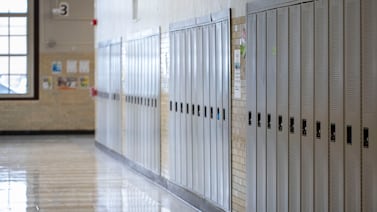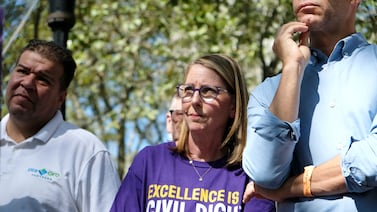Sign up for Chalkbeat Colorado’s free daily newsletter to get the latest reporting from us, plus curated news from other Colorado outlets, delivered to your inbox.
The Denver school board has adopted a new map that redraws the boundaries of the districts that five of the seven board members represent.
The new boundaries won’t affect where children go to school. Redistricting only affects which neighborhoods of the city the five school board members represent. The two at-large board members will continue to represent the entire city.
Redistricting was necessary to ensure board members represent roughly the same number of residents. Based on population counts from the 2020 Census, District 4 in northeast Denver had too many residents. District 2 in southwest Denver had too few.
But in redrawing the maps, the board also considered the racial makeup of the proposed districts so as not to dilute the voice of any group. That aspect of the process raised concerns from community groups and sparked disagreements among board members.
The new map shrinks the size of District 4 but keeps the historically Black neighborhoods of Five Points and Whittier in the district, which has long been represented by a Black board member. The map expands District 2, long represented by a Latino board member, by adding several neighborhoods, including Sun Valley and La Alma/Lincoln Park.
The school board was divided on which map to choose. Board members faced three options, labeled Maps A, B, and C, at a meeting last Thursday. A first round of voting eliminated Map A.
In a second round of voting, five board members voted for Map C. Two board members — Xóchitl “Sochi” Gaytán and Marlene De La Rosa — voted for Map B.
Gaytán and De La Rosa noted that Map B was favored by the Latino Education Coalition, a local advocacy group, and also got the most votes in a community survey.
But board member Michelle Quattlebaum, who represents District 4, told fellow board members that supporting Map C was “a decision grounded in our collective pursuit of equity and justice.”
Other board members made similar comments. Like large swaths of Denver, the Five Points and Whittier neighborhoods have experienced significant gentrification in recent years. But board President Carrie Olson said choosing Map C continues the cultural heritage of the area and is, in some ways, an act of resistance and empowerment.
“We can’t stop where people move and who lives there, but we can, at least for the next seven years, make sure those cultural icons are preserved,” Olson said, referring to the number of years until the board must redistrict again based on the next federal census.
Thursday’s vote on a new map was the culmination of a year and a half of debate among board members and advocacy groups. But there was very little engagement from the broader community. Despite the district sending out text messages and posting on social media, only 159 people filled out a recent survey and about 30 people attended a pair of meetings this month, according to a district presentation.
Melanie Asmar is the bureau chief for Chalkbeat Colorado. Contact Melanie at masmar@chalkbeat.org.





